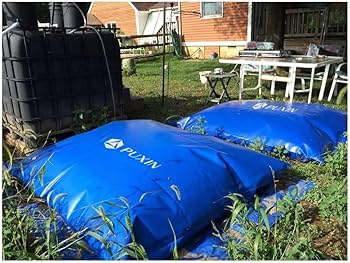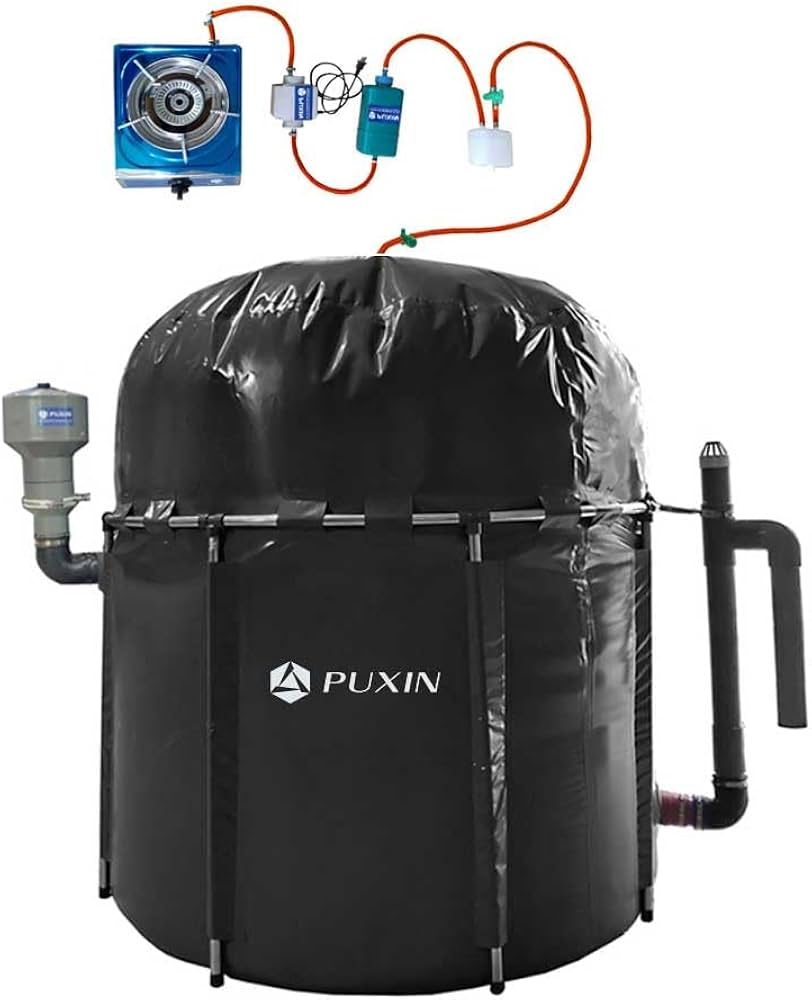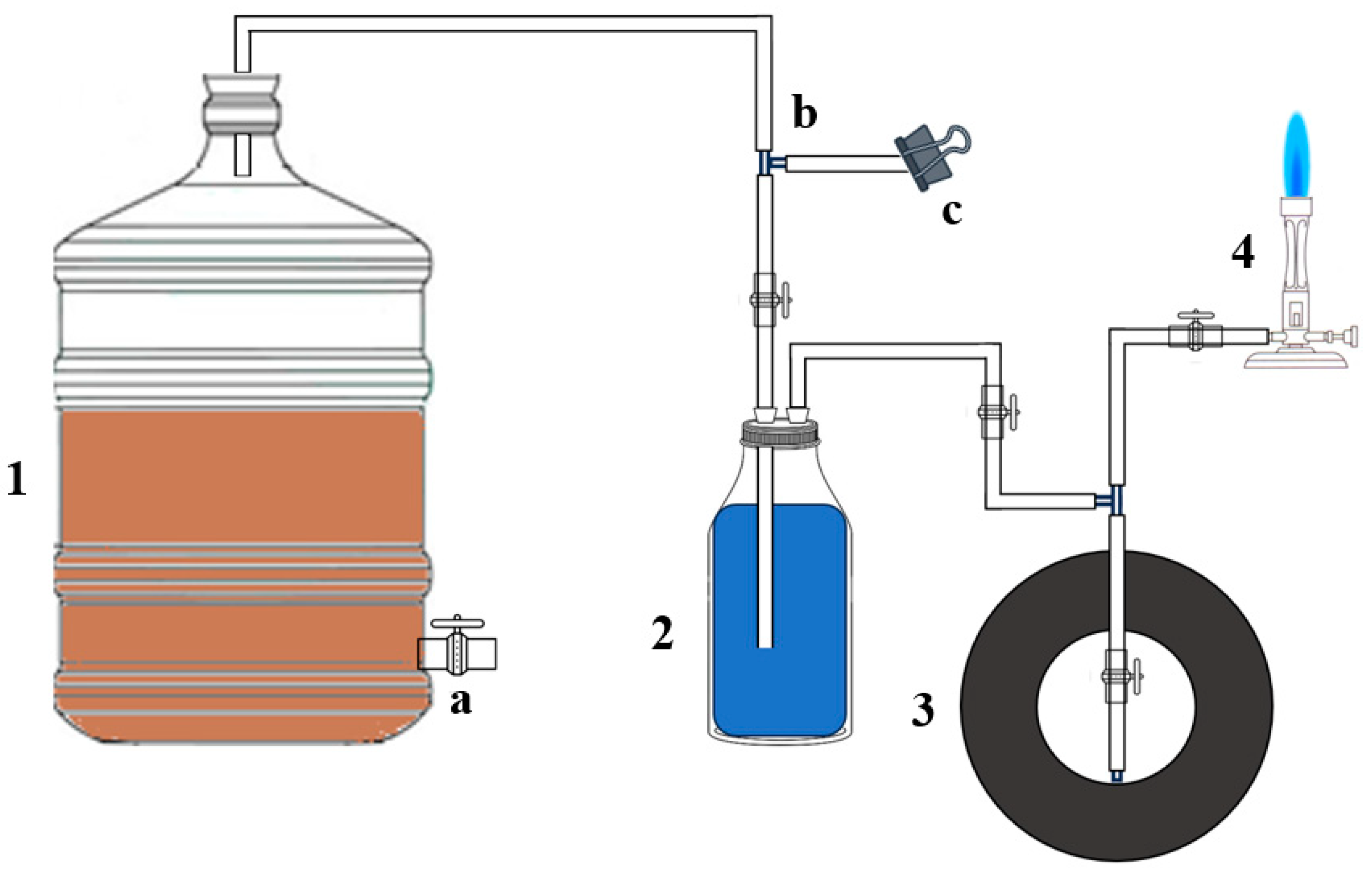Key Takeaways
- Storing biogas at home requires low-pressure storage systems to minimize risks.
- Biogas primarily consists of methane and carbon dioxide, which need careful handling.
- Choose storage materials that are robust and gas-tight to prevent leaks.
- Regular maintenance and leak testing are crucial for safety.
- DIY storage solutions can be cost-effective but require attention to detail and safety.
Intro to Home Biogas Storage
Storing biogas at home is a practical step towards sustainability, offering an eco-friendly alternative to conventional energy sources. Biogas is a renewable energy source produced from organic waste, making it an excellent option for those looking to reduce their carbon footprint. However, storing biogas safely and effectively at home requires understanding the unique properties of biogas and the appropriate storage solutions.
Why Storing Biogas Matters
Biogas storage is essential because it allows you to harness and use this renewable energy whenever you need it, rather than only when it's produced. By storing biogas, you can ensure a steady supply of energy for cooking, heating, or even electricity generation. Besides that, proper storage minimizes the risks associated with biogas, such as leaks or explosions, which can occur if the gas is not stored correctly.

“Amazon.com: PUXIN Biogas Storage Bag …” from www.amazon.com and used with no modifications.
Check Current PriceSelecting Your Choice Biogas Storage Pressure: Low pressure to Liquefaction Pressure Choices Explained
When it comes to storing biogas, pressure plays a significant role. Most home biogas storage systems operate at low pressure, which is safer and more manageable for homeowners. Low-pressure storage systems are less likely to leak and are easier to maintain. However, for those looking to store larger volumes of biogas or who have specific usage needs, medium-pressure or even liquefaction systems may be considered, though these are typically more complex and expensive.
Deciding on How Much to Home Biogas Store
The amount of biogas you should store depends on your household's energy needs and the capacity of your storage system. It's important to balance your production and consumption rates to avoid wastage or shortages. If you produce more biogas than you can store, you might need to look into additional storage solutions or ways to use the excess gas effectively.
Safety Principles
Safety is paramount when storing biogas at home. Always ensure that your storage containers are made from non-metallic materials that cannot cause a spark, that are resistant to gas permeation, and are properly sealed. Regularly check for leaks using soapy water or specialized detectors, and ensure that your storage area is well-ventilated to prevent the buildup of gas. Moreover, familiarize yourself with emergency procedures in case of a leak or other issues.
Understanding Biogas Components
To store biogas safely, it's crucial to understand its composition. Biogas is primarily made up of methane (CH4) and carbon dioxide (CO2), with traces of other gases like hydrogen sulfide (H2S) and water vapor. Each component has its own characteristics and safety considerations, which we'll explore further.

“PUXIN Home Biogas Digester Systems include plastic membrane biogas storage above the digester tanks…” from www.amazon.com and used with no modifications.
Check Current PriceMain Elements: Methane, CO2, and More
Methane is the main energy component of biogas, providing the fuel necessary for heating and electricity generation. However, methane is also highly flammable, which means it must be stored carefully to prevent accidental ignition. Carbon dioxide, while not flammable, can displace oxygen in enclosed spaces, posing a suffocation risk. Understanding these properties helps in choosing the right storage method and safety precautions.
Proper Ventilation and Placement of Storage Spaces
Proper ventilation is critical when it comes to storing biogas at home. Always ensure that your storage area is well-ventilated to prevent the buildup of any escaped gas. This reduces the risk of explosions and makes it safer for you and your family. Most importantly, never store biogas in confined or poorly ventilated spaces like basements or small sheds.
Besides ventilation, the placement of your storage container is equally crucial. Position your storage tanks or bags away from open flames, electrical outlets, or any other potential ignition sources. Additionally, make sure they are easily accessible for maintenance checks but secure enough to prevent tampering or accidental damage.
Importance of Regular Leak Testing
Example: “To check for leaks, mix a solution of soap and water and apply it to the seams and connections of your storage container. If you see bubbles forming, this indicates a leak that needs to be addressed immediately.”
Regular leak testing is a vital part of maintaining a safe biogas storage system. You can perform a simple leak test using soapy water, as described above, or invest in a gas detector for more accurate results. This practice not only ensures safety but also helps maintain the efficiency of your biogas system by preventing gas loss.
In addition to manual checks, consider scheduling periodic professional inspections to assess the integrity of your storage setup. Professional assessments can identify potential issues that might not be visible to the untrained eye, providing peace of mind and ensuring long-term safety.
By making regular leak testing a routine part of your biogas storage maintenance, you can catch and fix small issues before they become significant problems. This proactive approach helps protect your investment and ensures that your biogas system continues to operate smoothly and safely.
Home Biogas Storage Products
There are several products available for home biogas storage, each offering different benefits and suited for various needs. Understanding these options will help you make an informed decision on what works best for your setup. To learn more about the process, explore how biogas is produced and its applications.
From DIY solutions to commercially available storage bags, there's a range of choices that cater to different budgets and levels of expertise. Let's explore some of these options in detail.

“Home Biogas Plant PVC Flexible Biogas …” from www.bestsuppliers.com and used with no modifications.
Check Current PriceDIY Plastic Storage in Repurposed Drums and Tanks
Repurposing plastic drums and tanks is a popular DIY method for storing biogas. These containers are often readily available and can be modified to suit your storage needs. When using plastic drums, ensure they are made from materials that are resistant to gas permeation and can withstand the pressure of stored biogas. For more information on the process, check out the anaerobic digestion process.
Rubber Tyre Inner Tubes
Another cost-effective DIY solution involves using rubber tyre inner tubes. These can be an excellent option for temporary or small-scale storage needs. However, they may not be as durable or gas-tight as other materials, so regular checks for wear and tear are essential.
Besides that, rubber tubes can be easily moved and adjusted, making them a flexible option for those experimenting with biogas storage. Just ensure that the tubes are sealed properly to prevent leaks.

“DIY Biogas Reactor … note the black donut car tyre innertube shape (No. 3)” from www.mdpi.com and used with no modifications.
Biogas Storage Bags
Biogas storage bags are commercially available options designed specifically for storing biogas at home. These bags are typically made from durable, gas-tight materials and come in various sizes to suit different storage needs. They offer a more professional and reliable solution compared to some DIY methods.
DIY Home Biogas Storage Solutions
Example: “John, a homeowner from Ohio, decided to use a combination of plastic drums and biogas bags for his home setup. He found that this approach provided the flexibility and capacity needed to store the biogas produced by his family's waste.”
For those interested in DIY solutions, there are several approaches you can take depending on your resources and expertise. DIY storage solutions can be both cost-effective and rewarding, allowing you to tailor your setup to your specific needs.
However, it's essential to approach DIY projects with a focus on safety and reliability. Always research thoroughly and follow best practices to ensure your storage system is both effective and secure.
Moreover, consider starting with simple setups to gain experience before attempting more advanced techniques. This gradual approach allows you to learn and adapt as you go, minimizing risks and maximizing success. For those interested in the science behind it, understanding how biogas is produced can provide valuable insights.
Simple Setups for Beginners
If you're new to biogas storage, start with a simple setup using readily available materials like plastic drums or rubber inner tubes. These options require minimal modifications and provide a good introduction to the principles of biogas storage.
Advanced Techniques for Enthusiasts
For those with more experience, advanced techniques such as integrating multiple storage methods or building custom tanks can offer greater storage capacity and efficiency. These projects may require more technical knowledge and investment but can yield significant benefits in the long run.
By exploring these various storage options and techniques, you can find a solution that meets your energy needs and fits your budget. With the right approach, storing biogas at home can be a safe and rewarding endeavour.
Check Current PriceFinal Considerations
Storing biogas at home is not only a step towards sustainability but also a practical way to manage energy needs efficiently. By understanding the properties of biogas and the various storage options available, homeowners can make informed decisions that balance safety, cost, and convenience.
Whether opting for DIY solutions or investing in commercial storage products, the key is to prioritize safety and ensure that your system is well-maintained. Regular checks and adherence to safety protocols will help you enjoy the benefits of biogas without unnecessary risks.
Balancing Safety and Efficiency
Safety and efficiency are two sides of the same coin when it comes to biogas storage. By choosing the right materials and maintaining your storage system, you can ensure that your biogas is stored safely while maximizing its energy potential.
Always remember that a well-maintained system is not only safer but also more efficient. Regular maintenance checks, leak testing, and proper ventilation all contribute to the smooth operation of your biogas storage system.
Moreover, consider the long-term benefits of investing in quality storage solutions. While the initial cost may be higher, the savings on energy bills and the reduced environmental impact make it a worthwhile investment.
Maintaining Your Biogas System
Maintenance is a crucial aspect of any biogas storage system. Regularly inspect your storage containers for signs of wear and tear, and address any issues promptly to prevent leaks or other problems. Understanding the biogas production process can also help in maintaining the system effectively.
In addition to visual inspections, perform routine leak tests and ensure that your storage area is free from potential ignition sources. By keeping your system in good working order, you can enjoy the benefits of biogas with peace of mind.

“Amazon.com: PUXIN Biogas Storage Bag …” from www.amazon.com and used with no modifications.
Check Current PriceFrequently Asked Questions (FAQ)
To help you navigate the world of biogas storage, here are some common questions and their answers.
What materials are best for biogas storage?
The best materials for biogas storage are those that are robust and gas-tight. Common options include high-density polyethylene (HDPE) for plastic storage containers and specialized biogas storage bags made from durable, gas-resistant materials.
It's important to choose materials that can withstand the pressure of stored biogas and are resistant to gas permeation. This helps prevent leaks and ensures the longevity of your storage system.
Additionally, consider the environmental impact of your chosen materials and opt for sustainable options whenever possible.
How often should storage systems be checked for leaks?
Regular leak checks are essential for maintaining a safe biogas storage system. Ideally, you should perform leak tests at least once a month or more frequently if you notice any signs of potential issues.
In addition to monthly checks, schedule professional inspections annually to ensure that your system is in optimal condition. These inspections can identify hidden issues and provide recommendations for improvements.
By staying proactive with leak testing, you can prevent minor issues from becoming major problems and ensure the safety and efficiency of your system.
Can biogas be stored indoors safely?
Storing biogas indoors is generally not recommended due to the risk of gas buildup and potential ignition. However, if indoor storage is absolutely essential, ensure that the area is very well-ventilated and away from any ignition sources.
Additionally, use gas detectors to monitor the air quality and quickly identify any leaks. Taking these precautions can help mitigate the risks associated with indoor biogas storage.
What are the main safety risks with biogas storage?
The primary safety risks with biogas storage include leaks, explosions, and suffocation hazards. Methane is highly flammable, so any leaks can pose a significant fire risk.
Carbon dioxide, a component of biogas, can displace oxygen in enclosed spaces, leading to suffocation. Proper ventilation and regular leak testing are essential to mitigate these risks.
How does biogas storage enhance energy efficiency at home?
Biogas storage allows you to harness renewable energy from organic waste, reducing reliance on fossil fuels and lowering energy bills. By storing biogas, you can use it when needed, ensuring a consistent energy supply.
Moreover, biogas storage helps reduce waste and greenhouse gas emissions, contributing to a more sustainable and eco-friendly lifestyle. By incorporating biogas into your energy mix, you can enhance your home's energy efficiency while reducing your environmental impact.
When considering how to store biogas at home, it's important to focus on safety methods and the right products to ensure a secure setup. For those interested in learning more about safe biogas storage, our Puxin biogas bag review article also provides detailed guidance on the topic. Proper storage not only maximizes efficiency but also minimizes potential hazards associated with biogas systems.
Check Current Price



